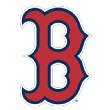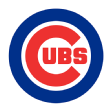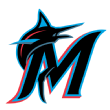As the second half begins with most MLB teams still in the playoff hunt, there are multiple competitive races that could be decided by just a game or two. The difference between reaching October action and a season ending after game No. 162 might hinge on a key player or two performing better than expected, or getting back to a previously established level of performance after a tough first half.
What follows is one key player on each team to watch in the second half of the season who might change the course of a playoff race. For those teams not in contention, a key player worth watching is listed for clubs looking to reconfigure their rosters and rebuild for next year.
American League
 Baltimore Orioles: Richie Martin
Baltimore Orioles: Richie Martin
The Orioles shortstop was seen as a potential steal in the Rule 5 draft last winter, but Martin has not adjusted well to the jump from Double-A to the big leagues, with a .219 on-base percentage and very little power. He took a while to adjust at Double-A when he was promoted in 2017, and his second half might help determine whether he stays on the MLB roster next season and becomes a bigger part of Baltimore's rebuild.
Over his past four turns, Sale has struck out 30 batters and walked just six, but he's also averaging 5⅓ innings per start and has given up six homers and 19 runs. Last summer, Sale pitched just 29 second-half innings, but the Red Sox could afford to be cautious with their 2018 playoff spot secure. This season, every win could matter the rest of the way and they'll need Sale at his best to earn a shot at defending their World Series title.
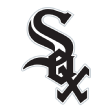 Chicago White Sox: Dylan Cease
Chicago White Sox: Dylan Cease
The rebuild on Chicago's South Side has been slowed by injuries and struggles in the rotation, but despite Michael Kopech missing the season with surgery and Carlos Rodon going down earlier this year, the team has taken a collective step forward. With Lucas Giolito 's breakout season, the team could use a little bit more good news on the pitching front heading into a potentially contending 2020 campaign, and Cease might be the pitcher to provide that good news in the form of a strong second half.
 Cleveland Indians: Jose Ramirez
Cleveland Indians: Jose Ramirez
Who else could it be? Cleveland's star third baseman suffered a sudden drop in production in the first half this year, with just seven homers and a batting line 30% below average after hitting 39 homers and a batting line 46% above an average player last season. Cleveland's success is highly dependent on its few stars, and if Ramirez doesn't rebound, the Indians probably won't make the playoffs.
 Detroit Tigers: Jeimer Candelario
Detroit Tigers: Jeimer Candelario
A somewhat promising first full season in 2018 gave away to a rough start and a demotion this year for Candelario. The third baseman hit well in his trip to the minors and has four homers in 14 games since his return to the big league club. Continuing that would help provide a more hopeful future for a club still a way from contention.
The Astros don't need much to win the division, but they might need some help at the back end of the rotation or in the bullpen. James could fill one of those roles. James spent the first half in the bullpen, striking out 37% of batters but walking 15% of them as well. His 4.91 ERA wasn't pretty, but his 4.01 FIP indicated he pitched a little better than his ERA showed. He was a starter basically up until last postseason, so the Astros have options, but James needs to step up in whatever role he's given to be a factor in Houston's stretch run and playoffs.
 Kansas City Royals: Hunter Dozier
Kansas City Royals: Hunter Dozier
The Royals' 27-year-old third baseman was on fire in April, hot in May, injured in June, and hasn't yet hit in July. A dramatic change in plate discipline helped unlock Dozier's power earlier this season, and a return to good health and mashing could make him a decent trade chip or contract-extension candidate for the Royals this winter.
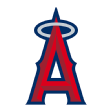 Los Angeles Angels: Andrew Heaney
Los Angeles Angels: Andrew Heaney
After a solid 2018, Heaney missed the first two months of this season due to elbow issues and has made just eight starts, with mixed results. When he's gotten a lot of strikeouts, he's given up multiple homers; when he doesn't give up homers, he walks as many batters as he strikes out. He needs to find the right balance, and if he can, he'll be the best pitcher the Angels have.
The Twins' center fielder hasn't been their best player this season, or even among their top three or four. Those honors goes to Jorge Polanco, Max Kepler or one of the two very good starting pitchers in Jake Odorizzi and Jose Berrios. But Buxton is having a good year, and at 25 years old he still has all the tools to become a star and help Minnesota hold off Cleveland in the second half.
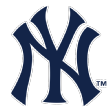 New York Yankees: James Paxton
New York Yankees: James Paxton
The left-hander had a history of injuries with the Mariners before his winter trade, and a knee injury sidelined Paxton for most of May this season. He struggled upon return, though his 11-strikeout, no-walk performance against the Rays in his final start before the All-Star break is encouraging. With Luis Severino still out, J.A. Happ struggling and CC Sabathia showing some of his age, the Yankees need Paxton to step up behind Masahiro Tanaka and stabilize the top of the rotation.
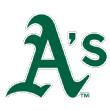 Oakland Athletics: Liam Hendriks
Oakland Athletics: Liam Hendriks
Last season, Oakland rode Blake Treinen and his late-inning dominance to a playoff spot. This year, Treinen hasn't been as good, but Hendriks has stepped up with a 2.06 FIP and 1.21 ERA. He's already pitching great, but he's going to need to keep performing at that level if the A's are going to make the playoffs again.
 Seattle Mariners: J.P. Crawford
Seattle Mariners: J.P. Crawford
The Mariners shortstop isn't exactly a prospect anymore, but he's racked up just over 400 plate appearances. But after spending some more time in Triple-A this season, Crawford is getting another opportunity and is running with it so far, with an above-average bat. The year isn't going to be a good one in the standings for the Mariners, but getting a good season out Crawford after trading away Jean Segura to get him would be a positive for the club.
With Tyler Glasnow's potentially extended stay on the injured list, the Rays' rotation lacks depth, and two-way prospect McKay could be very important down the stretch as the Rays look to get to the postseason. Through three starts, McKay has been as advertised, with 13 strikeouts, just one walk and a 1.69 ERA in 16 innings.
On their way to a surprising first half, the Rangers have received a lot of welcome performances from unexpected players. Odor, on the other hand, has been one of the worst hitters in baseball, and his .259 OBP is the worst in the game among qualified batters. Odor has put up average offensive numbers in 2015, 2016 and 2018, but endured a year like this one in 2017. A good second half might salvage his season and also help keep the Rangers' playoff hopes alive.
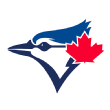 Toronto Blue Jays: Lourdes Gurriel Jr.
Toronto Blue Jays: Lourdes Gurriel Jr.
As Toronto attempts to chart its course back to contention, it must decide on potential fixtures for its next playoff run. After middling performances in the minors and the majors resulting in a demotion earlier this year, Gurriel has caught fire, with 16 homers in his past 46 games and an overall .288/.338/.585 batting line for the season. A strong second half can cement his future role and potentially a position, as the former infielder has played a lot more outfield this season.
National League
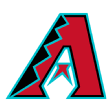 Arizona Diamondbacks: Ketel Marte
Arizona Diamondbacks: Ketel Marte
The shortstop broke out in the first half, reaching 4.0 fWAR after totaling 2.8 fWAR over the three previous seasons. The Diamondbacks are still afloat in the wild-card race thanks to Marte's efforts, but the team can't afford a slowdown from its best-performing player if it hopes to keep pace in the NL.
Out since early June with a foot injury, Gausman's absence from the Atlanta rotation came right as the team opted to sign Dallas Keuchel. Now nearing a return, Gausman joins a rotation with veterans such as Keuchel and Julio Teheran and youngster such as Max Fried and Mike Soroka, and he could provide the depth necessary to help the Braves hold their division lead.
The bullpen held the Cubs back in the first half of the season and caused them to go out and get a closer in signing the still-available Kimbrel. The returns have been so-so thus far, but if the Cubs are going to hold onto their division lead, Kimbrel is going to have to shake the rust off and pitch like the dominating finisher he has been in past years.
The Reds' attempt at contention this season hasn't gone according to plan, but they aren't out of it yet. Since Senzel's call-up in May, the top prospect has been tasked as the team's leadoff hitter and center fielder after playing in the infield for most of his minor league career. Senzel has hit well, but as he adjusts to the league and vice versa, it will be important to see if he can maintain his solid level of play or reach even higher.
 Colorado Rockies: Kyle Freeland
Colorado Rockies: Kyle Freeland
Is the Rockies' young lefty the Coors conqueror from a season ago or the homer-prone command artist missing his spots he was earlier this year? He probably wasn't as good as his numbers showed in 2018, but Colorado hopes he isn't as bad as his numbers have shown this year. Good starting pitching pushed the Rockies into the playoffs last season, but it is hard to see them getting back there if Freeland doesn't look at least a little like the 2018 version of himself.
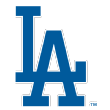 Los Angeles Dodgers: Corey Seager
Los Angeles Dodgers: Corey Seager
Seager looked like a star in 2016 and 2017 with his 12.9 combined fWAR ranking second in the NL only to Kris Bryant, but Tommy John surgery forced Seager to miss nearly all of 2018, and he hasn't been the same player so far this season. The Dodgers don't need a ton of help from Seager to win the NL West, but the star-level version of Seager as opposed to the solid player we've seen this year could be the difference in October.
Smith looked to be on the verge of a breakout last season, but after posting good numbers for two months, fell apart in June and missed the rest of the season. He's pitched well so far this season, but struggled in late May and missed June with hip injuries. Healthy, Smith is a pitcher to watch and a potential trade chip for the Marlins as they get ready for winter.
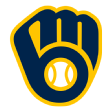 Milwaukee Brewers: Lorenzo Cain
Milwaukee Brewers: Lorenzo Cain
Is this a half-season slump, a lost season, or a sharp career decline for the Brewers' offensive catalyst from a year ago? Cain's walks are down, his strikeouts are up, and his success rate on steals is down below 70%. The Brewers have struggled over the past month, but they aren't out of the race in a crowded NL Central. A return to form from Cain might get the Crew jump-started.
 New York Mets: Noah Syndergaard
New York Mets: Noah Syndergaard
The big righty has the potential to change the look of the Mets whether he's on the team or not. If he's traded at the deadline, the Mets will be getting a group of exciting prospects or near-ready MLB talents to watch. If he sticks around, whether or not he turns his performance around after a lackluster first half, will be one of the keys for the Mets' offseason as they try to determine which direction to take the team.
 Philadelphia Phillies: Bryce Harper
Philadelphia Phillies: Bryce Harper
Harper isn't having a bad season, with above-average hitting and a solid 15% walk rate, but Philadelphia wasn't hoping for just pretty good when it signed him. The Phillies are still in the playoff hunt and they have a lot of talented players, but none has shown the ability to dominate quite like Harper. Philadelphia isn't going to go on a run unless Harper plays more like the player he was during his best seasons with Washington.
 Pittsburgh Pirates: Chris Archer
Pittsburgh Pirates: Chris Archer
Sending away Austin Meadows, Tyler Glasnow and Shane Baz for Archer doesn't look so great as Archer has both an ERA and FIP above 5.00. But then he struck out a season-high 10 batters in his first start after the All-Star break, and if the Pirates have any hope of staying in the race -- and redeeming that trade -- they are going to need a lot more starts like that one.
 San Diego Padres: Chris Paddack
San Diego Padres: Chris Paddack
Paddack is the Padres' best pitcher and one of the game's best arms, but if the Pads get themselves in the race, it will likely be due in part to Paddack's strong pitching. He also might have an innings limit that prevents him from making a bigger impact. After giving up six homers in three games in late May and early June, he got 10 days off, then struck out only one batter in his next start. He then dominated against the Cardinals and Dodgers. How he performs, and how the Padres handle him, could end up being the key to San Diego's season.
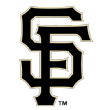 San Francisco Giants: Brandon Belt
San Francisco Giants: Brandon Belt
We'll try to avoid players who probably won't be with the Giants next month (see: Bumgarner, Madison) and go with another member of San Francisco's old core. Belt is still only 31, but his hitting moved from solidly above average to something resembling average, which isn't great for a first baseman. He's been mostly the same player again this year and still has two years left on his deal after this one, but he's been hot in July, so how he finishes is worth keeping an eye on for his future with San Francisco or elsewhere.
 St. Louis Cardinals: Jack Flaherty
St. Louis Cardinals: Jack Flaherty
Matt Carpenter and Paul Goldschmidt are the struggling stars of the Cardinals' offense, but Flaherty is representative of their equally disappointing rotation. Flaherty is still missing bats with a 26% strikeout rate, but his 20 homers allowed this season already matches last year's total. The stuff is there and the Cardinals need an ace, even if their offense finally comes around.
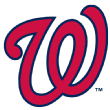 Washington Nationals: Victor Robles
Washington Nationals: Victor Robles
One of the better but more unheralded prospects in baseball entering the season, Robles has held his own on offense and played a capable center field at just 22. However, he has yet to take off and show the great contact skills that made him such a good prospect to begin with. If the Nationals are going to make a run at the Braves, their stars are going to need to do the heavy lifting, but a burst from Robles could end up being the difference at the end of the year.

